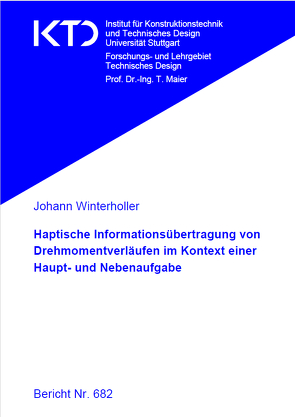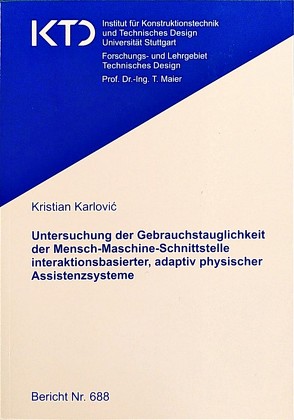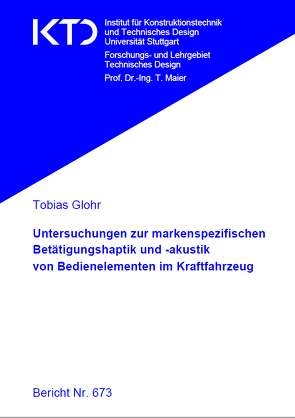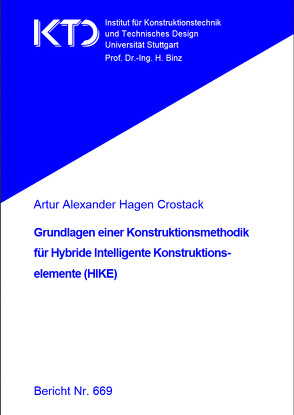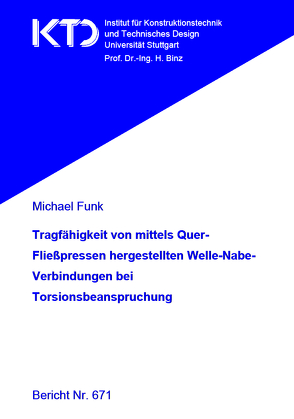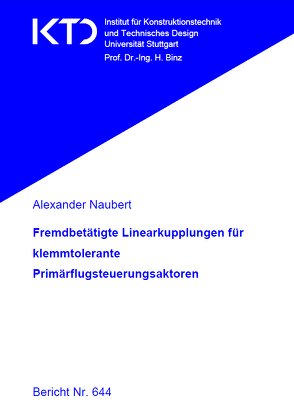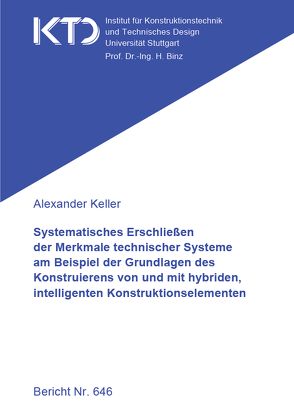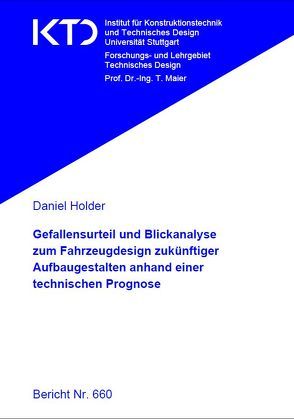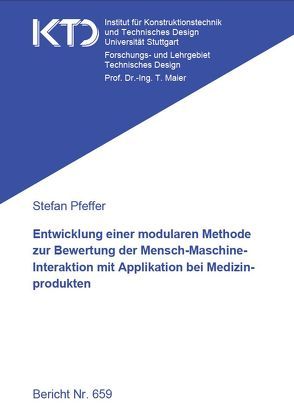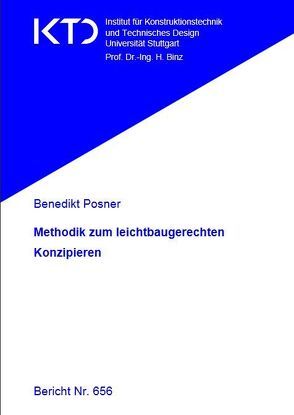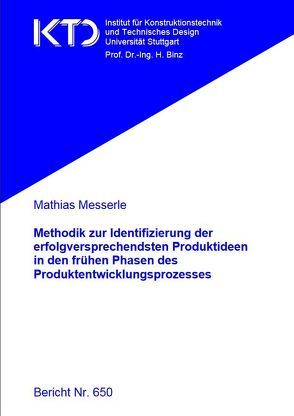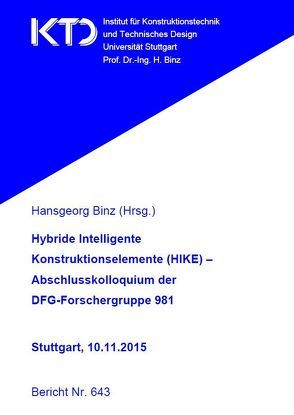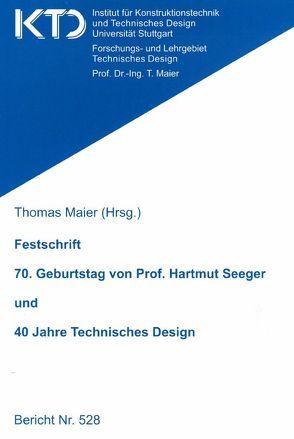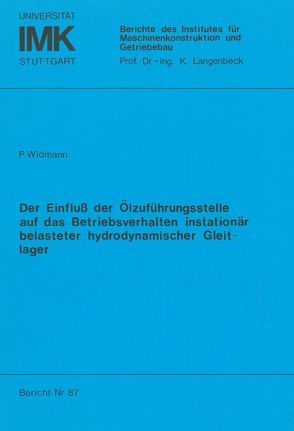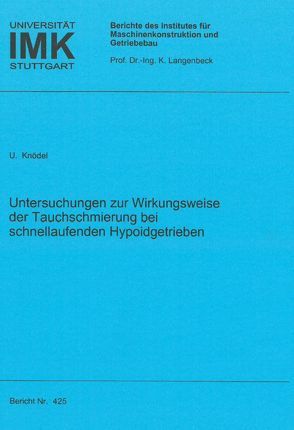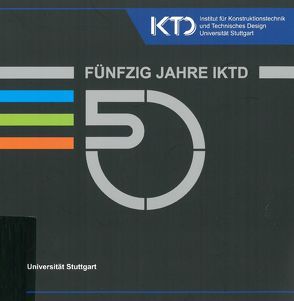Verleger: Universität Stuttgart Institut für Konstruktionstechnik und Technisches Design
- Verlagsname Universität Stuttgart
- Ergänzung Institut für Konstruktionstechnik und Technisches Design
- Straße Pfaffenwaldring 9
- PLZ 70569
- Postfach 80 11 40
- Polsleitzahl des Postfaches 70511
- Ort Stuttgart
- Orts Ergänzung -Vaihingen
- Telefonnummer +49 (0711) 685-66055
- Email E-Mail anzeigen
- Web http://www.iktd.uni-stuttgart.de
- Faxnummer +49 (0711) 685-66219
- ISBNPrefix 978-3-922823,978-3-946924
Verlagsdaten
Untersuchung der Gebrauchstauglichkeit der Mensch-Maschine-Schnittstelle interaktionsbasierter, adaptiv physischer Assistenzsysteme
Untersuchungen zur markenspezifischen Betätigungshaptik und -akustik von Bedienelementen im Kraftfahrzeug
Grundlagen einer Konstruktionsmethodik für Hybride Intelligente Konstruktionselemente (HIKE)
Auslegung von Kugelgewindetrieben bei oszillierenden Bewegungen und dynamischer Belastung
Tragfähigkeit von mittels Quer-Fließpressen hergestellten Welle-Nabe-Verbindungen bei Torsionsbeanspruchung
Fremdbetätigte Linearkupplungen für klemmtolerante Primärflugsteuerungsaktoren
Systematisches Erschließen der Merkmale technischer Systeme am Beispiel der Grundlagen des Konstruierens von und mit hybriden, intelligenten Konstruktionselementen
Gefallensurteil und Blickanalyse zum Fahrzeugdesign zukünftiger Aufbaugestalten anhand einer technischen Prognose
Entwicklung einer modularen Methode zur Bewertung der Mensch-Maschine-Interaktion mit Applikation bei Medizinprodukten
Quantifizierung der visuellen Größenkodierung und des Informationsgehalts zweidimensionaler Objekte auf Basis der Blickinteraktion
Methodik zum leichtbaugerechten Konzipieren
Methodik zur Identifizierung der erfolgversprechendsten Produktideen in den frühen Phasen des Produktentwicklungsprozesses
50 Jahre Technisches Design
Hybride Intelligente Konstruktionselemente (HIKE) – Abschlusskolloquium der DFG-Forschergruppe 981
Festschrift 70. Geburtstag von Prof. Hartmut Seeger und 40 Jahre Technisches Design
Entwicklung einer schnell schaltenden Bremse und Kupplung für Linearbewegungen zum Überlastschutz in Werkzeugmaschinen
Der Einfluss der Ölzuführungsstelle auf das Betriebsverhalten instationär belasteter hydrodynamischer Gleitlager
Untersuchungen zur Wirkungsweise der Tauchschmierung bei schnellaufenden Hypoidgetrieben
Fünfzig Jahre IKTD
Oben: Publikationen von Universität Stuttgart Institut für Konstruktionstechnik und Technisches Design
Informationen über buch-findr.de: Sie sind auf der Suche nach frischen Ideen, innovativen Arbeitsmaterialien, Informationen zu Musik und Medien oder spannenden Krimis? Vielleicht finden Sie bei Universität Stuttgart Institut für Konstruktionstechnik und Technisches Design was Sei suchen. Neben praxiserprobten Unterrichtsmaterialien und Arbeitsblättern finden Sie in unserem Verlags-Verzeichnis zahlreiche Ratgeber und Romane von vielen Verlagen. Bücher machen Spaß, fördern die Fantasie, sind lehrreich oder vermitteln Wissen. Universität Stuttgart Institut für Konstruktionstechnik und Technisches Design hat vielleicht das passende Buch für Sie.
Weitere Verlage neben Universität Stuttgart Institut für Konstruktionstechnik und Technisches Design
Im Weiteren finden Sie Publikationen auf band-findr-de auch von folgenden Verlagen und Editionen:
- Universität Stuttgart Städtebau-Institut
- Universität Stuttgart Uni-Bibl.
- Universität Stuttgart Verkehrswiss. Inst.
- Universität Trier Lehrstuhl f. Marketing
- Universität Trier Umweltmeteorologie
- Universität Tübingen Geograph. Inst.
Qualität bei Verlagen wie zum Beispiel bei Universität Stuttgart Institut für Konstruktionstechnik und Technisches Design
Wie die oben genannten Verlage legt auch Universität Stuttgart Institut für Konstruktionstechnik und Technisches Design besonderes Augenmerk auf die inhaltliche Qualität der Veröffentlichungen. Für die Nutzer von buch-findr.de: Sie sind Leseratte oder Erstleser? Benötigen ein Sprachbuch oder möchten die Gedanken bei einem Roman schweifen lassen? Sie sind musikinteressiert oder suchen ein Kinderbuch? Viele Verlage mit ihren breit aufgestellten Sortimenten bieten für alle Lese- und Hör-Gelegenheiten das richtige Werk. Sie finden neben
